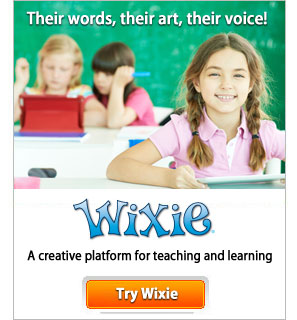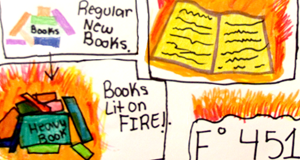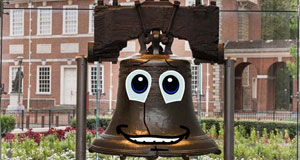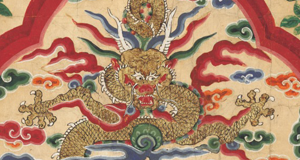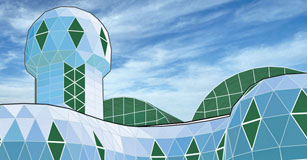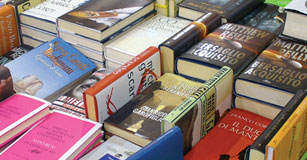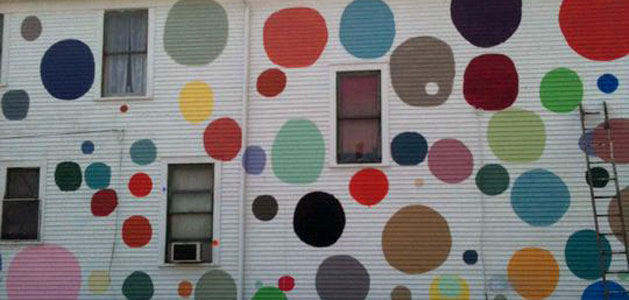Ancient Cultures News Broadcast
Students create a news broadcast as part of a unit on ancient cultures.
App: Frames and Pics4Learning
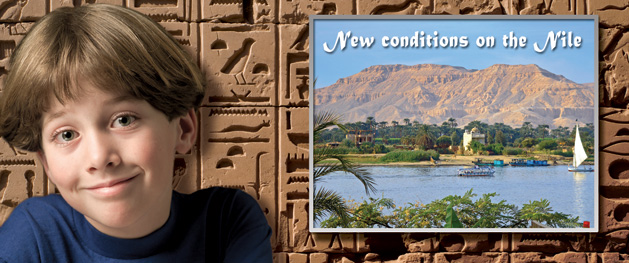
Task
Culture, the way of life that characterizes a group of people, is one of the most important things anthropologists and historians study. Geography is an important factor in how a civilization’s culture develops. In this project, student teams will develop an animated news broadcast on the geography of an ancient culture, focusing on the question: How did geography affect the daily life of this culture?
Engage
Locate images on Pics4Learning in the geography category that relate to the culture you are studying and share them with the class. As students view the various images, ask them to think about how the geography they see in the pictures might influence the lifestyle of the inhabitants of that place.
Let students know that in order to demonstrate their understanding of the culture they have studied, they will create an animated news broadcast that shows how geography influenced this culture. Share your expectations for their performance and show a high-quality example of a completed project.
As a class, watch a couple of news broadcast segments. Work together to identify a list of the features typically found in a TV news broadcast. Explore how the segments contribute to an effective whole. What makes the broadcast feel consistent, even when it has many different segments and topics? Discuss how broadcasts effectively inform their audience about news, events, and other topics. Also discuss how networks attract viewers and keep them interested using:
- Catchy headlines
- Compelling stories
- Attractive news anchors
- Strong reporting
These kinds of questions will also promote media literacy skills and help students become more savvy media consumers.
Divide the class into small groups. Have students choose which ancient culture they will explore in their video. If you are using this as a culminating activity, they may already have enough notes and information about it to make informed decisions and articulate how the culture was influenced by the geography around them.
If students need additional information, encourage them to visit sites like History for Kids to find more information.
Create
Divide the class into small groups. Have each team decide what types of segments, features, and ads they might include and then work to develop a more specific structure and timeline. For example, they might include a main story, weather, an interview, a human interest story, and so on.
Have each team complete a storyboard that includes information about the segments that need to be written. The storyboard should include design elements and ideas like supporting graphics, background images, and music so that the entire broadcast will have continuity.
Each team member should be responsible for writing one piece of the news broadcast. This could be a 15–second teaser for an upcoming segment, an interview, or weather a report. If students are struggling to determine what content to include in their segment, have them organize the segment using the 5 W’s: who, what, where, when, and why.
Working on a complete news broadcast requires a variety of skills and expertise. You may choose to let team members identify and explore their own strengths, weaknesses, and skills, or you may find it best to assign roles to ensure the groups will be able to complete the necessary tasks.
Have each team create a Frames document with original animated illustrations and recorded narration. Teams might also choose to include photographs, sound effects, background music, titling, and more.
Share
When students have finished building the broadcast in Frames, have them export their work as a movie or Flash animation file to share with the rest of their class or other classes studying geography and history. You may also want to coordinate an “Evening News” showing with parents and community members to showcase the news broadcasts on a large screen.
Assessment
The final animated broadcast provides an excellent summative assessment, and there are many opportunities for formative assessment throughout the process. Having teams turn in their scripts and storyboards prior to starting work on the animated news broadcast will help make sure all teams are on track to complete the project. Having impromptu discussions with each group during the project building process about the structure of informational materials and geography will give you insight into whether or not you need to readdress these topics with individual groups or the class as a whole.
You may to introduce time management strategies and encourage students to develop a project calendar to keep them on schedule.
Resources
Scarre, Christopher and Fagan, Brian M. Ancient Civilizations (3rd Edition).
ISBN: 0131928783
Cotterell, Arthur. The Penguin Encyclopedia of Ancient Civilizations.
ISBN: 0140114343
Standards
NCSS – Curriculum Standards for Social Studies
Time, Continuity, and Change – Social studies programs should include experiences that provide for the study of the way human beings view themselves in and over time, so that learners can:
c) identify and describe selected historical periods and patterns of change within and across cultures.
Common Core Anchor Standards for English Language Arts - Grade 6-12
Writing Standards
Text Types and Purposes
3. Write narratives to develop real or imagined experiences or events using effective technique, well-chosen details, and well-structured event sequences.
Production and Distribution of Writing
4. Produce clear and coherent writing in which the development, organization, and style are appropriate to task, purpose, and audience.
6. Use technology, including the Internet, to produce and publish writing and to interact and collaborate with others
Research to Build and Present Knowledge
7. Conduct short as well as more sustained research projects based on focused questions, demonstrating understanding of the subject under investigation.
ISTE NETS for Students 2016:
3. Knowledge Constructor
Students critically curate a variety of resources using digital tools to construct knowledge, produce creative artifacts and make meaningful learning experiences for themselves and others. Students:
a. plan and employ effective research strategies to locate information and other resources for their intellectual or creative pursuits.
b. evaluate the accuracy, perspective, credibility and relevance of information, media, data or other resources.
c. curate information from digital resources using a variety of tools and methods to create collections of artifacts that demonstrate meaningful connections or conclusions.
6. Creative Communicator
Students communicate clearly and express themselves creatively for a variety of purposes using the platforms, tools, styles, formats and digital media appropriate to their goals. Students:
a. choose the appropriate platforms and tools for meeting the desired objectives of their creation or communication.
b. create original works or responsibly repurpose or remix digital resources into new creations.
c. communicate complex ideas clearly and effectively by creating or using a variety of digital objects such as visualizations, models or simulations.
d. publish or present content that customizes the message and medium for their intended audiences.



